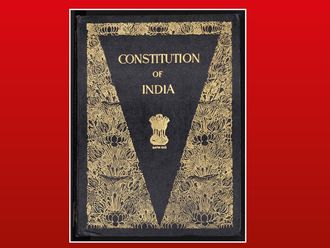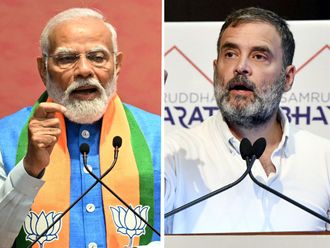What, exactly, does the US stand for in the Middle East? More important, what would the average Iraqi, Syrian, Egyptian or Yemeni say that it stands for? The suggestion that the US is retrenching may seem absurd, given that Yemenis can hear the buzz of drones overhead. The notion that the United States is in the business of supporting democratic pluralism might clash with their reading of our Egypt strategy or our will-they-or-won’t-they waffling over whether to actively support Syrian opposition fighters. Day by day, with chaos blossoming, it becomes clearer that if America does have a strategic narrative for the Middle East, it certainly has not articulated it effectively. In marketing terms, it is not making the sale.
Other nations could be forgiven for failing to grasp America’s priorities and values. “Don’t do stupid [stuff]” may make sense to the American public, but it means little to the rest of the world and it means nothing to those vulnerable to the evangelism of groups such as the Islamic State of Iraq and the Levant (Isil), now choosing between the difficult work of politics and the terrible promise of jihad. What role will US foreign policy play in their choice? Have they come to see US power as a threat? Or have they seen first-hand the capacity of US aid workers, nongovernmental organisations and men and women in uniform to serve as partners in their aspirations for a better life? If the US does not think seriously about the way its strategy plays out in the eyes and lives of such people — if America does not think about the narrative — it will lose them for a generation.
This cuts to the core of the policy challenges America faces in Iraq and Syria. Many wonder, with good reason, how America can reliably identify moderates to arm and aid, questioning whether today’s moderates will turn out to be tomorrow’s extremists. Washington knows with certainty, though, that the Isil and militant groups like it will fill their ranks with those who have been given no reason to trust in politics, let alone nonviolence. Preventing radicalisation is difficult; de-radicalising hard-line believers is nearly impossible. So it is smart for nations such as the US, Turkey and Jordan to build relationships with resistance leaders and invest in them as a tool to preempt extremism.
The US, acting in coalition with regional partners, should offer a better choice. Its commitment to this narrative must be active, visible and credible, keeping in mind that the prison at Guantanamo Bay hobbles its pitch, as torture did, and as the drone campaign threatens to do if it is not better justified. It is not enough for US policymakers to come down from the mountain with stone tablets bearing the words “pluralism”, “rule of law” and “human rights”.
While Admiral Mike Mullen was chairman of the Joint Chiefs of Staff, he assigned two staff members the task of drafting a new US strategy. The result was ‘A National Strategic Narrative’, released publicly by the Wilson Centre in 2011. America protected the identities of its authors under the pseudonym ‘Mr Y’, a nod to George Kennan’s outline for containment in his iconic “X-article”. That narrative seems prescient now for its description of the new strategic environment — first and foremost, because it emphasised the need to work with other nations to design a common approach in an open world. The narrative rightly declared an end to an order in which the US could seek control and the beginning of a system in which America will need to compete for influence. The US needs a foreign policy that reflects the bold clarity of these findings.
The goal is a strategy shaped together with the Middle Eastern world: Leaders and peoples alike, borrowing the best impulses of the bottom-up Arab Spring and the traditionally top-down US approach to engagement. America’s promise to the Middle East must be one in which collaboration helps the people of the region achieve shared values by a route of their own choice. Make no mistake: America risks losing the argument. The Isil is mastering information warfare. It has a savvy Twitter presence and a glossy newsletter that highlights battlefield successes alongside — of all things — the work of its consumer protection authority. It has declared a hasty, heady victory in pursuit of its ultimate goal: The seventh century caliphate restored. Its message has gained a frighteningly broad following.
What to do? Many perceive drones plus “don’t do stupid [stuff]” is America’s foreign policy and it certainly is not an adequate narrative. For every militant America’s airstrikes might have killed, it left behind scores of Iraqis and Syrians whose only contact with the US came by way of a Hellfire missile. Instead, America needs a “track two” surge, a dynamic partnership with Middle Eastern citizens seeking stability, economic growth and freedom from corruption. Such a surge will be international, drawing on the interests of neighbouring states in preventing the spread of extremism. It will also be a whole-government initiative, drawing on considerable US resources in the field of peace-building.
The US must put itself forward as the partner of choice, offering a narrative of forward movement and a genuine lifeline to those slipping into the grasp of jihad.
— Washington Post
Jane Harman, the president and chief executive of the Woodrow Wilson International Centre for Scholars, represented California’s 36th District in the House from 2001 to 2011, including four years as the ranking Democrat on the House intelligence committee.











